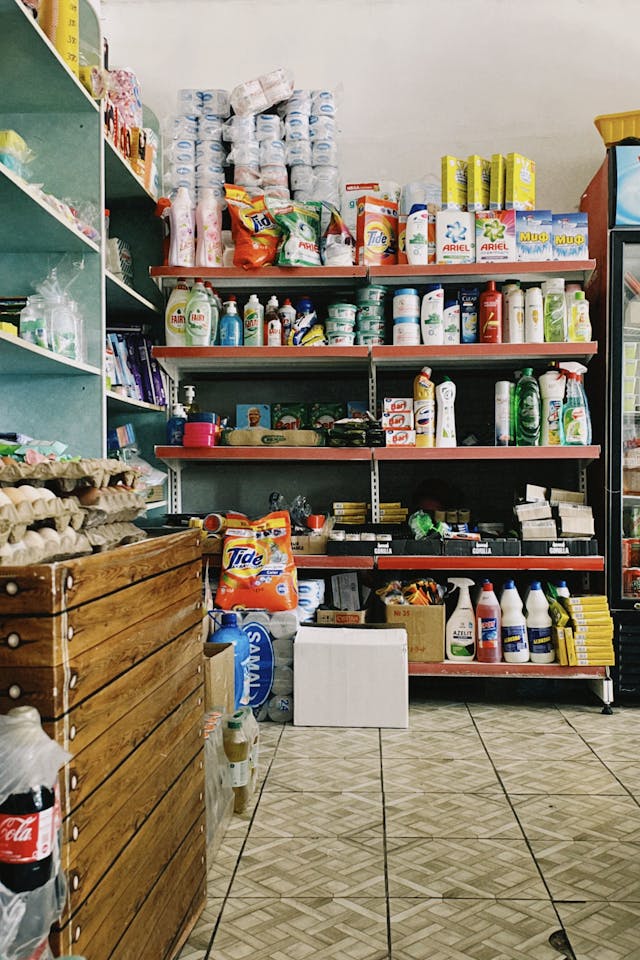The Story of Rising Consumer Spending in the UK
I have some good news: UK consumers are spending 18% more on FMCG vs 2021.
That’s only looking at one side of the story. They’re spending it because they must, as inflation has reached its highest rates in over 40 years. When we look at volume figures, we find that since 2021 there has been a continuous decline in actual product purchase. In fact, 71% of subcategories experienced unit decline.
With lower purchasing power, the UK consumer has had to find new ways of spending that money to sustain their lifestyle and fulfill their needs. Naturally, the first act of saving was to trim down spending where possible. While utility bills might be the greatest point of spending, cutting down is not as attainable. The next best move for the UK consumer seemed to have been reducing their budgets for eating out.
Next came the process or behaviors with which they shop for groceries. The best way to describe it was to take it one day at a time. We can see an 8.8% increase in shopping trips by mission versus a year ago. The greatest benefit of going on daily trips is that the shopping list is sustained at “what you need now” and avoiding waste.
Being driven by price sensitivity above all else, consumers in the UK have made a major shift in where they shop as well. Our data shows that 85% of households in Great Britain shopped at discounters in 2023. Putting that in perspective, that translates to 100 million more trips versus the previous year.
Finally, brands. Private labels have been on the rise, and with good reason. The quality of their products has improved enough, tagged with the right price to suit current wallet share.
The story usually goes from surviving, to reviving to thriving. We are in the “reviving” phase, and that goes for both FMCG manufacturers and consumers.
Here’s a snapshot of the “route to revive” for FMCG manufacturers:


Executional excellence
Executional excellence is making yourself available where your customers are looking for you (or your competitors). In short, it’s about the right distribution model for product. Inevitable price increases had a great impact on volume purchases, but the biggest factor that determined whether a brand sold more volume than the previous year was availability.
Innovations
The data says it all: 41% of consumers in Great Britain like to try new food or drinks once a month. In high turnover categories like “Impulse,” we have seen growth in both range and sales—even for premium lines. In fact, we expect more competition for listings in 2024; the data shows a direct relationship between added lines and value sales.
It won’t be an easy sell to retailers, however. There was a time when the right innovation was consumer centric. In today’s market, the right innovation is one that meets a key shopper need, that isn’t being met at the present, alongside driving category incrementality and aligning with individual retailer strategies.
Understanding missions
This is a two-part step.
The first part of is pack architecture. In a “price-first” shopping mindset, a good way to grow distribution and reach new shoppers is looking at price pack architecture. Shifting price tiers have left space for brands to move into, but pack size changes may be only way possible to realise these opportunities. Smaller pack sizes allow brands to be affordable for shoppers, and bigger packs offer trade-up shoppers better value. It’s advisable for premium brands to consider a smaller offering to appeal to shoppers who may be reticent to purchase your product at full price for the standard size.
Keep in mind, 63% of shoppers in Great Britain look at item price when considering a product, and this figure moves to 70% for those severely impacted by the cost-of-living crisis.
The best way to re-consider pack sizes is by first understanding how your target market use your product and how they justify price to themselves.
The second part of this step is about maximizing on occasions. Gaining an understanding of how consumers who are differently affected from a financial perspective can help you decide how to make the most of those seasonal opportunities.
To simplify:
- Severely affected groups are limited in both cash and time, so easy-to-use and affordable packed meals would be their go-to.
- Moderately affected groups will entertain at home instead of going out to celebrate. They are still looking for quality with affordability. They are on the lookout for helpful add-ons such as recipe ideas and meal solutions.
- The group that is least affected financially would still opt for a home-cooked meal, but with heavier consumption of alcohol and treats. In short, it’s about indulgence at home.
Focus on brand equity
54% of consumers believe that private label quality is equal to branded alternatives. The opportunity herein lies in identifying what your brand can offer that they don’t.
A key tactic is to remind consumers of your product quality and your brand heritage. Give them a reason above and beyond price to purchase your product.
2024 is the year to revive your brand, so it’s important the messaging is consistent to remind consumers who you are.
Health & Wellness
Our latest survey confirms* that Health & Wellness is back on the agenda for consumers. Whilst cost of living is still the paramount concern for UK consumers, the landscape is shifting. A growing number of consumers listed Health & Wellness as their top concern, matching levels seen amidst the pandemic. FMCG brands that align with and communicate around these evolving consumer values will be better-positioned to succeed. 44% of consumers agree that “healthy properties or enhancing benefits” of a product are important or very important when buying food & drink.
44% of consumers agree that “healthy properties or enhancing benefits” of a product are important or very important when buying food & drink.
Environment and Sustainability
The natural segue from health and wellness is Sustainability, which is once again coming within the focus of the UK consumer’s shopping decisions. Sustainability means different things to different people. This also varies for consumers when making shopping decisions too.
Our data shows that 65% of consumers are actively looking for claim and credentials on product packaging. But despite active adoption of sustainable habits, challenges persist. Affordability remains a hurdle, with 49% of consumers citing that sustainable options are too expensive.
As consumers become more aware, communicating clear sustainability claims, and providing affordable options are needed to meet the consumer need.
Key Takeaways for your Brand’s ‘Revive’ Strategy
- After 2 years of falling volumes in FMCG retail, NIQ analysts are anticipating a return to volume growth in 2024.
- Price and promotions will play a big role this year as both retailers and brands are seeking consumer attention. Getting the balance right will be key to a successful 2024.
- Most growth will come from Discount and value channels. Don’t ignore omni + convenience. Having the right format in the right channel is key.
- Understanding shopper missions is important in 2024 – are consumer needs met for each mission or occasion? Consider meal solutions that encourage consumers to choose your brand and your SKUs.
- Health and Sustainability are back on the agenda. What role is your brand playing to ensure consumers know that these trends are on your agenda too?
*NIQ Homescan survey November 2023





